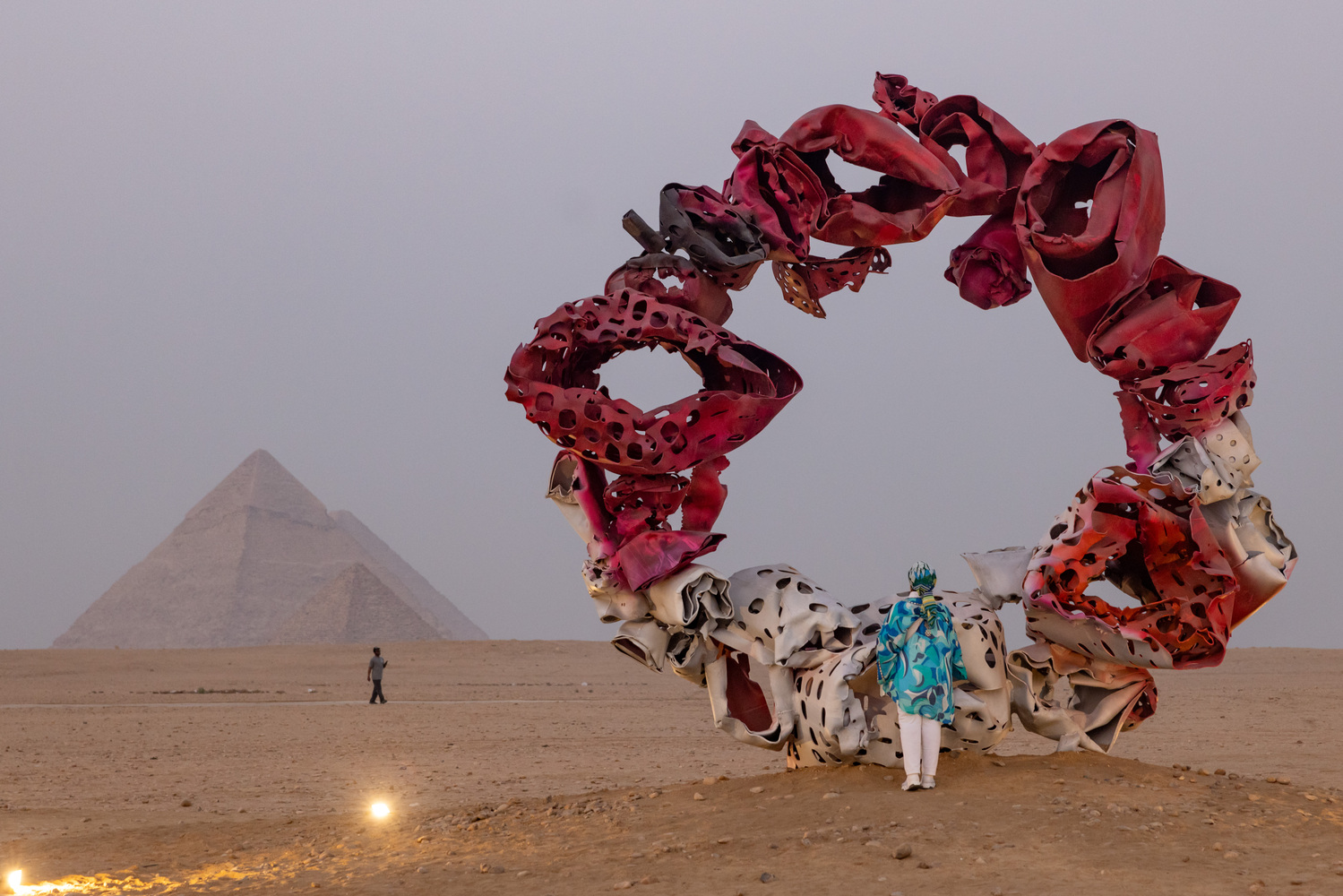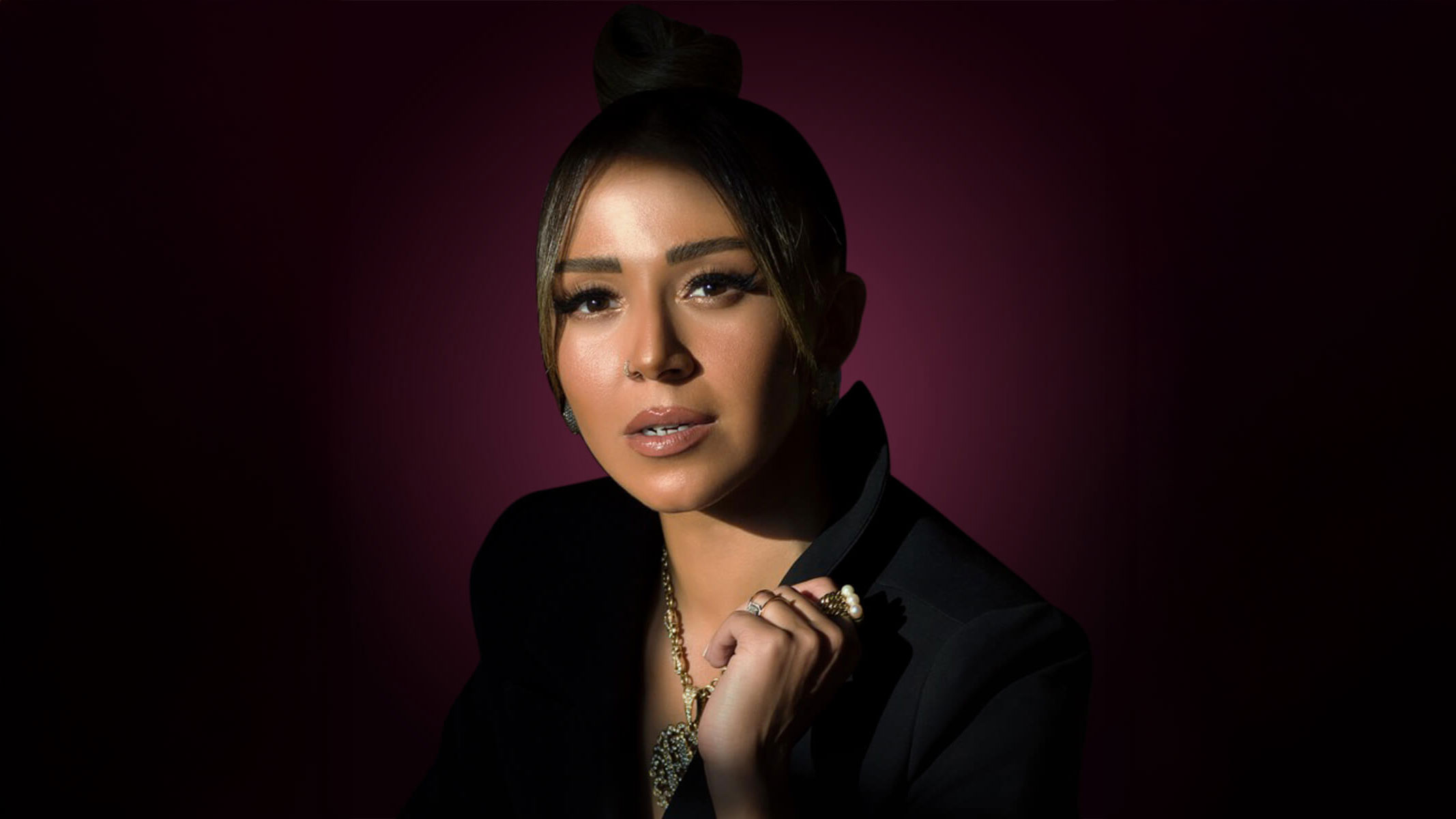Since its move to Giza in 2021, Art D’Égypte’s Forever Is Now has forced Cairo to reimagine its landmarks. The 2025 edition marks its fifth iteration: from November 11 to December 6, the exhibition will bring contemporary installations, performances, and public programming into dialogue with the Pyramids.
In past editions, certain artworks stirred both admiration and debate. At Forever Is Now IV (2024), Khaled Zaki presented The Race, a dismantled chariot beside metallic horse sculptures. He told The Guardian:
“Putting art in front of the pyramids is both an honour and a challenge … whatever you put in front of the pyramids, the pyramids win.”
Indian artist Shilo Shiv Suleman offered Padma, ten giant lotus flowers — 2.5 to 4.5 m tall — installed in the sand, crafted in brass, iron, and silk. Artists and visitors described them as surreal or spiritual oases in the desert.
This year, the Global Artists Taking Over Giza list includes big names such as Michelangelo Pistoletto, Vhils (Alexandre Farto), Recycle Group, Ana Ferrari, Mert Ege Köse, and more. The event is intentionally timed to coincide with the opening of the Grand Egyptian Museum (GEM), deepening the admission into Egypt’s cultural continuum.
A key incident: during the 2024 opening night, CairoScene livestreamed the arrival, showing crowds queuing near dusk at the Pyramids Visitors Center, as night lights flickered on the installations.
Speakers in the official press conference have included Hussein Fahmy (actor and cultural figure), Zahi Hawass (the Egyptologist), and Dr. Ahmed Ghoneim (Director of GEM). Fahmy and Hawass have publicly praised the exhibition’s role in reviving Egypt’s cultural season.
In 2025, VIP programming includes a downtown art walk through Cairo International Art District (CIAD), a City Art Walk of historic architectural sites, and a VIP opening at Giza (Oct 31 – Nov 4). On November 1, guests will participate in the opening and an exclusive tour.
Beyond spectacle, there has always been tension. Critics in past years have accused the event of eclipsing smaller, critical voices in Cairo’s avant-garde scene. An anonymous local artist once asserted that the event “erases our history … making it seem as if the only thing happening is Art D’Égypte,” pointing to the struggles of independent galleries and rising costs.
In 2022, ArtNet reported how the event and the opening of GEM projected a polished cultural front, even while many local artists complained of shrinking funding and systemic neglect.
In 2025, the organizers promise layered public programs: Artist Talks at GEM, sound and dance performances on the Plateau, night tours, and open-air workshops. VIP tickets will also include evening boat receptions on the Nile, architectural walks, and private collection viewings.
Among the stones and sand, visitors will pass works that hold mirrors up to time, memory, identity, and modernity. In 2024, for instance, Ik-Joong Kang built Four Temples, a mirrored temple façade where children’s drawings, hieroglyphs, and syllables converged in multiple scripts — Arabic, English, Hangeul — echoing centuries of migration and memory. A camel guide passed by, unfazed.
This balance — between spectacle and criticism, memory and provocation — is what Forever Is Now has always danced with. In 2025, as the world watches Egypt’s next cultural chapter, the Pyramids will stand silent, while the art dares to speak.




